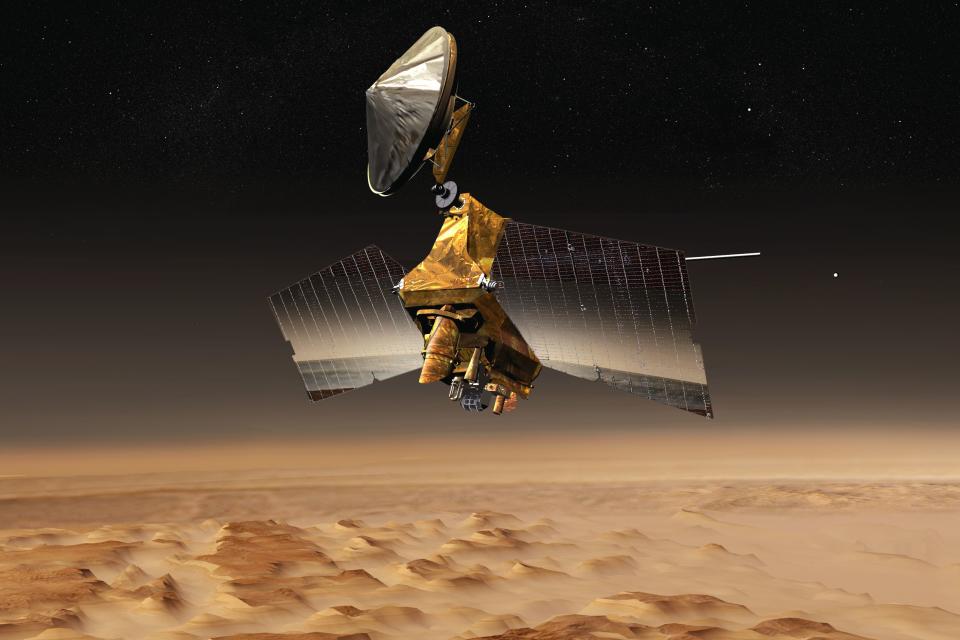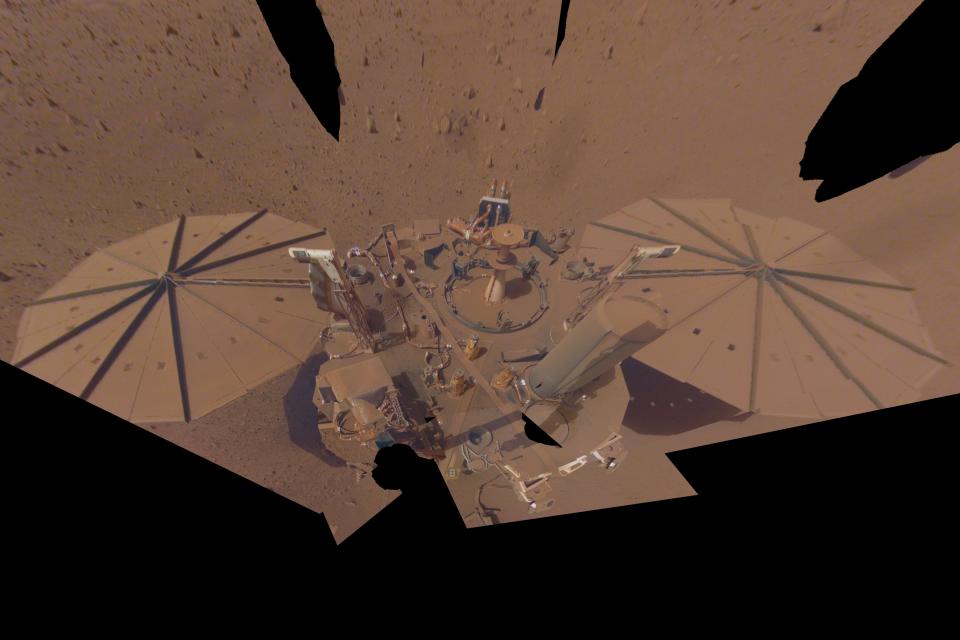Mars lander discovers massive crater created by meteoroid near Martian equator, unearths buried ice
A recent discovery by NASA’s InSight lander could have implications for NASA’s future plans to send astronauts to the red planet.
On Dec. 24, 2021, NASA’s InSight lander recorded a magnitude 4 Marsquake that scientists later learned was caused by a meteoroid strike estimated to be one of the biggest seen on Mars since NASA began exploring the cosmos.
>>> STREAM CHANNEL 9 EYEWITNESS NEWS LIVE <<<
The crater was first spotted on Feb. 11, 2022, by scientists working at Malin Space Science Systems.
Scientists learned that the quake was caused by the meteoroid when they looked at before-and-after images from NASA’s Mars Reconnaissance Orbiter and spotted the new crater.







The meteoroid impacted in the Amazonis Planitia region of Mars, which is close to the Martian equator, and unearthed boulder-size chunks of ice that could help scientists in their plans to send astronauts to Mars.
According to a news release, “subsurface ice will be a vital resource for astronauts, who could use it for a variety of needs, including drinking water, agriculture, and rocket propellant. Buried ice has never been spotted this close to the Martian equator, which, as the warmest part of Mars, is an appealing location for astronauts.”
Working together, two @NASAMars spacecraft —one on the ground and one in orbit—detected a large meteorite that slammed into the Red Planet. The result was confirmed earlier this year: https://t.co/4ofuP8MXId pic.twitter.com/eVMFbBOY7U
— NASA (@NASA) October 27, 2022
The meteoroid is estimated to have been 16 to 39 feet in size – small enough that it would have burned up in Earth’s atmosphere, but not in Mars’ thin atmosphere, which is just 1% as dense as Earth’s.
The impact gouged out a crater roughly 492 feet across and 70 feet deep. Some of the ejecta thrown by the impact flew as far as 23 miles away.
Read: Kennedy Space will have viewing packages for SpaceX Falcon Heavy launch
While there are larger craters that exist on Mars and predate any missions, this crater is believed to be one of the largest craters ever witnessed forming anyplace in the solar system.
“It’s unprecedented to find a fresh impact of this size,” said Ingrid Daubar of Brown University, who leads InSight’s Impact Science Working Group. “It’s an exciting moment in geologic history, and we got to witness it.”
Our @NASAInSight Mars lander "heard" seismic signals while our Mars Reconnaissance Orbiter captured images of the impact crater made by this Martian meteorite. To make the sounds audible, the data was sped up 100 times. Listen: https://t.co/X00C5ca2NQ
— NASA (@NASA) October 27, 2022
Due to dust settling on its solar panels, InSight has seen its power drastically decline and is expected to shut down within the next six weeks, bringing the mission’s science to an end.
Since landing in November 2018, InSight has detected 1,318 marsquakes, including several caused by smaller meteoroid impacts.
Read: Powerball jackpot reaches $1 billion
But the quake resulting from last December’s impact was the first observed to have surface waves – a kind of seismic wave that ripples along the top of a planet’s crust, according to the news release.
“The image of the impact was unlike any I had seen before, with the massive crater, the exposed ice, and the dramatic blast zone preserved in the Martian dust,” said Liliya Posiolova, who leads the Orbital Science and Operations Group at MSSS. “I couldn’t help but imagine what it must have been like to witness the impact, the atmospheric blast and debris ejected miles downrange.”
Read: ‘Bigger and better than ever’: SeaWorld announces return of Christmas Celebration
Click here to download the free WFTV news and weather apps, click here to download the WFTV Now app for your smart TV and click here to stream Channel 9 Eyewitness News live.

 generic
generic 